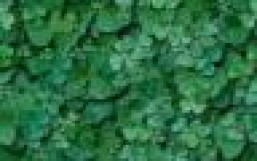Architect and artist Li Han from Atelier 11 | China documents China’s rapid urbanization in intricate, elegant renderings, part architectural drawing, part anime still. According to Alison Furuto at ArchDaily, Li presents the ”spontaneous interaction between the urban environment and human activities.” The drawings not only document current conditions but also offer bold environmental visions for neighborhoods in China’s capital.
Two of Beijing’s metro lines connect at Xi Zhi Men metro station (see image above). “The endlessness, crowdedness, and chaos shown in this one of the busiest spots in Beijing make the place a typical example of how people’s daily life and the urban space exert influence on each other.” Here, Li isolates the busy transfer route within the station, visualizing the complex path.
In his drawing of Xi Ba He, which is described as a “a typical Beijing-style residential community built in the 1990s,” a neighborhood is transformed into an “environmental zoo,” a “paradise for animals and a city for human at the same time, without the fence between animals and human in the regular zoos.” Furuto says the drawing depicts a “beautiful fairytale,” but stories still matter: “As commented by architect Wang Xin, ‘(story) is always a long-term fulcrum for a city…is a invisible city structure…With stories, we will see life.’”
San Li Tun, the street where locals and expats meet in bars and restaurants and shop at high-end stores, is an example of a part of the city that has lost its “approachable and authentic Beijing-style atmosphere.” Now the area is a mix of local and global, a new kind of Beijing. Zooming in on building No.42 in South San Li Tun, Li sees a “6-floor apartment building constructed in 1980s and the apartments on the first and second floors are all transformed into bars, restaurants, DVD stores, tattoo stores, adult shops, and fashion boutiques.”
On the drawing itself, Furuto writes: “What this piece cares about is how the whole space is used and its atmosphere, and the interaction between the city and its inhabitants. The size recorded in the final piece may not be accurate, but the scale and atmosphere are very precise. A mechanical way for presentation – explosive axonometric projection – is used in this piece to depict the urban phenomenon.”
For 798, the art district in Beijing, Li and Atelier 11 created a drawing that shows not only the architecture but the roads, greenery, infrastructure, along with the “furniture, mechanical equipments, plantations, billboards, displays, and even tableware in the restaurants.” Li overwhelms with detail, but in doing so shows the “complexity and diversity” of the district, and perhaps all urban landscapes.
Read the article and see more of Li’s drawings.
Image credits: Li Han copyright / ArchDaily









